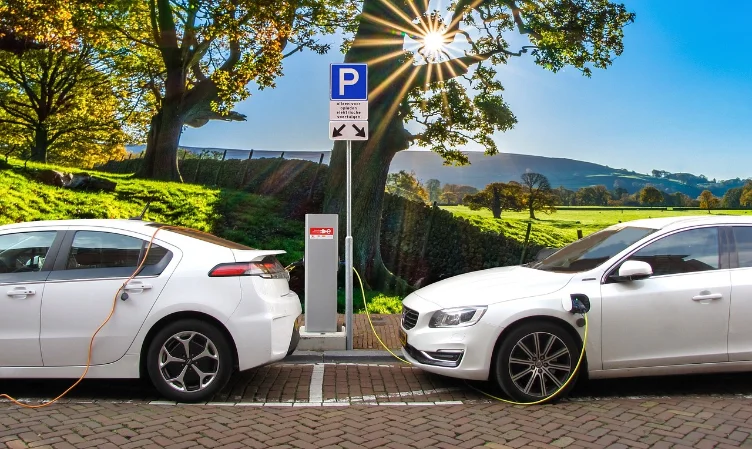The US economy probably grew quite a bit in the third quarter, and it’s the fastest it has been in almost two years. This surprising boost is mostly because people are finding jobs easily, their wealth is increasing, and prices are not rising too quickly.
It’s estimated that the country’s overall economic activity increased by 4.5% last quarter, which is more than twice as fast as the previous quarter. This information comes from a survey conducted by Bloomberg with various economists. This growth rate is the quickest since the end of 2021 when the economy was bouncing back from the impact of the pandemic.
“The American shopper has been surpassing predictions, even those made by the Federal Reserve. The Federal Reserve was expecting American consumers to cut back a bit, but that hasn’t happened,” said Elie Maalouf, the CEO of InterContinental Hotels Group during the company’s earnings call on October 20.
This outstanding performance in the quarter brings good news for President Joe Biden. He’s been facing challenges in convincing Americans who are still feeling the impact of rising prices that his economic policies are effective. However, it creates a bit of a puzzle for Fed Chair Jerome Powell and his team.
The Federal Reserve has been raising interest rates significantly since March 2022 to control inflation by reducing demand while avoiding a recession. Even though inflation has eased due to fewer disruptions in global supply chains caused by the pandemic and the Ukraine conflict, the demand within the United States remains strong despite the Federal Reserve’s efforts.
A healthy job market is still pushing people to spend, and businesses are picking up speed. Federal Reserve Chairman Jerome Powell mentioned that if signs of ongoing strong growth continue, it could potentially lead to higher inflation and may require the Fed to increase interest rates further.
Powell hinted that the Federal Reserve is probably going to keep interest rates stable at their upcoming meeting, but they’re not ruling out the possibility of raising rates in the future.
Bruce Kasman, the chief economist at JPMorgan Chase & Co., commented that Powell might not be very patient if the growth numbers don’t start cooling down soon.
Anticipating a Slowdown
Powell pointed out that most experts believe the economy will slow down in the fourth quarter and the coming year after a very robust third quarter. According to a recent survey of economists by Bloomberg, the median prediction is that the Gross Domestic Product (GDP) will only grow by about 0.7% this quarter.
The challenge is that many forecasters, including those at the Federal Reserve, have been surprised by how well the economy has held up despite the Fed increasing interest rates repeatedly.
Diane Swonk, the chief economist at KPMG LLP, expressed her surprise, saying, “I couldn’t believe it, but that’s where we stand.” She is forecasting a 5.5% growth rate for the third quarter.
During the period from July to September, people splurged on spending because they had more money in their pockets, thanks to higher wages and slowing price increases. Additionally, the significant increase in household wealth at the start of this year, driven by rising home and stock prices, likely played a role in boosting consumer spending.
Short-term Surge
Spending in the last quarter might have been pushed up by events like Taylor Swift and Beyoncé’s concert tours and the release of hit movies like “Barbie” and “Oppenheimer,” as suggested by Anna Wong, the chief US economist at Bloomberg Economics. However, these factors won’t have the same impact in the current quarter.
Yelena Shulyatyeva, a senior US economist at BNP Paribas SA, pointed out, “A lot of this spending appears to be linked to people buying non-essential items and services. We believe it’s a temporary boost.”
What’s also expected to be temporary is a drop in the amount of goods being imported and an increase in inventories during the last quarter. Economists find these trends surprising, given strong consumer demand, and they don’t anticipate them happening again in the last three months of 2023.
Some economists believed that the housing sector contributed positively to the economy last quarter after being a drag for more than two years. However, the recent increase in mortgage rates due to rising Treasury yields could stifle the recovery in housing investment.
Diane Swonk noted that it’s a “short-lived bounce that’s already reversing.”
In the coming quarter, the economy is expected to face several challenges that weren’t present in the previous three months. This includes the resumption of student loan payments after a pause due to the pandemic and a growing strike among auto workers. There are also other risks on the horizon, such as the possibility of a government shutdown next month and the potential for a larger conflict in the Middle East.
Mark Zandi, the chief economist at Moody’s Analytics, predicts that growth will slow down to around 1% this quarter, following a 3.8% growth rate in the third quarter.
If you take the averages of these factors and put them together, “the second half of the year would look pretty good, getting closer to what the economy is capable of, and keeping the unemployment rate fairly steady,” according to Zandi. He also noted that this situation would be more reassuring for the Federal Reserve.





